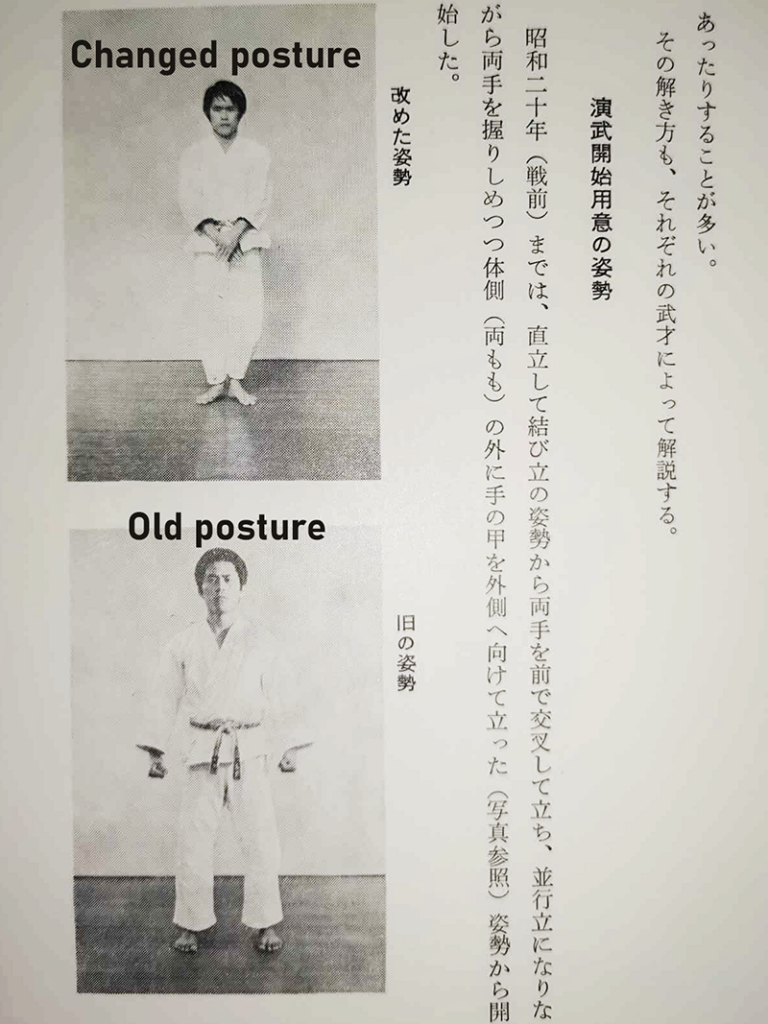In Gōjū-ryū, there are basically two ways of opening at the beginning of the kata:
Method 1 (old posture)
- a. Stand in Musubi-dachi, with open hands crossed in front of the tanden.
- b. Open stance to Heikō-dachi while closing the fists and place them at the side of the body.
- c. Begin kata.
Method 2 (changed posture)
- a. Stand in Musubi-dachi, with open hands crossed in front of the tanden.
- b. Begin kata.
According to Miyazato (1978: 85-86), the opening of kata developed as follows.
Posture of preparation at the beginning of the performance [of the kata]
Until 1945 (before the war/Battle of Okinawa), people stood upright in the posture of musubi-dachi with their hands crossed in front of them. From there, while changing the feet into heikō-dachi, they clenched both hands and placed them at the sides of the body (at the thighs), with the backs of the hands pointing outward. This is how [the performance of the kata] started.
From 1948, Miyagi Sensei changed the performance to start from standing upright in the posture of musubi-dachi with both hands crossed in front (below the navel). Eventually, he changed the posture at the end of the kata to be identical with the posture at the beginning of the kata. Due to food shortages and difficulties in transportation and communication after the war, it was difficult to implement these measures thoroughly.
In short, Miyazato says that Method 1 was used until 1945, and that Miyagi changed this to Method 2 in 1948. He also says that notification about these changes did not reach everybody involved in Gōjū-ryū at that time.
Moreover, Mabuni Kenwa already described Method 1 in 1934 for the beginning of Sanchin and Sēenchin.
As a side note, in 1941, Nagamine and Miyagi developed Fukyū-gata I and II. In Nagamine’s school they are still called Fukyū-gata I and II, but in Gōjū-ryū, Fukyū-gata II is called Gekisai Dai I. Interestingly enough, in Nagamine’s school the kata start as in Method 2. Therefore, Method 2 might have been used by Miyagi already in 1941.
© 2022 – 2024, Andreas Quast. All rights reserved.

